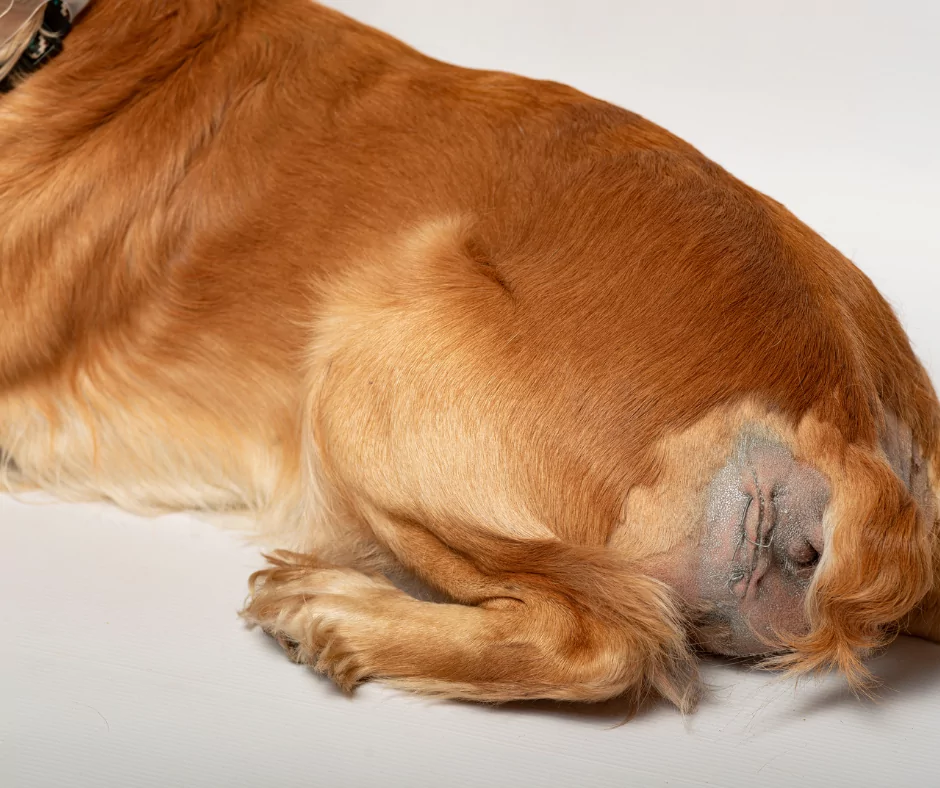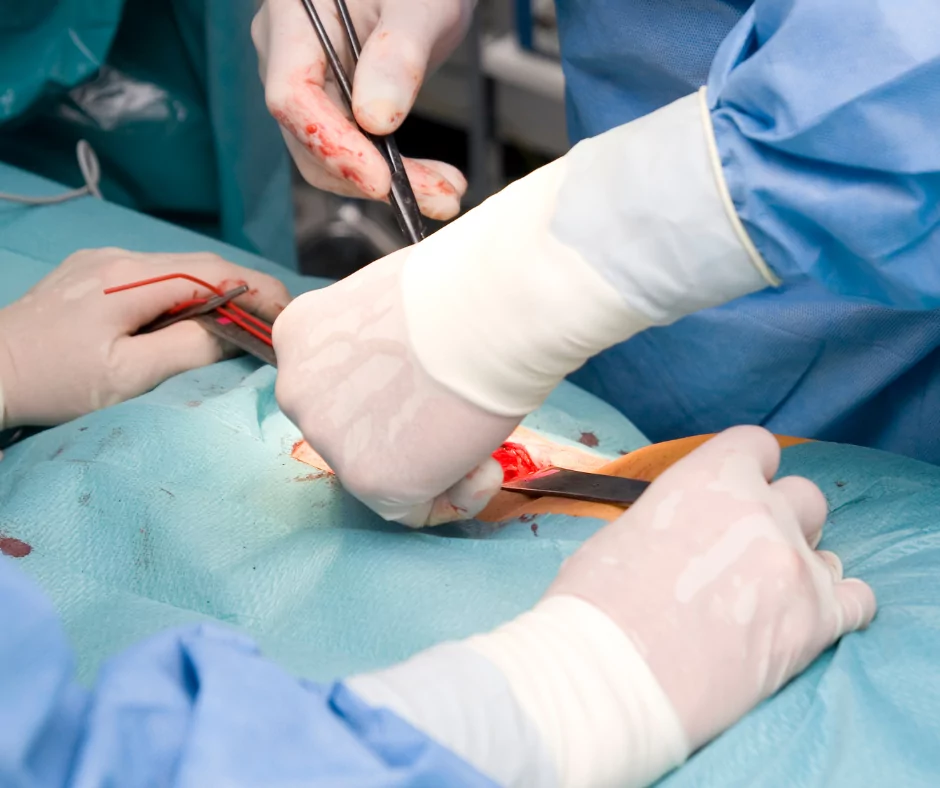What is a Perineal Hernia in Dogs?
A perineal hernia in dogs is a result of a weakening or failure of the muscular part of the diaphragm of the pelvis. When is intact, the pelvic diaphragm gives support to the abdomen and keeps the abdominal content in place and not encroaching the rectum.
When a dog gets perineal will show symptoms of constipation, trouble defecating and urinating, lethargy, appetite changes, and altered tail. A perineal hernia usually affects older dogs, aged seven to nine years old.

What are the Symptoms of Perineal Hernia in Dogs?
Perineal hernias are common in dogs, but it’s important to know the symptoms so that you can get your pet to the vet. Most of these symptoms could indicate a serious perineal hernia problem rather than just a simple case of constipation.
Perineal hernias occur when an opening at the base of the tail allows intestines or abdominal fat to push through a hole in the muscle wall between the anus and scrotum. This makes it easier for the puppy to eliminate waste, but it also makes him vulnerable to pain, irritation, infection, and sphincter muscle damage from the hardened stool.
Attending your dog’s basic veterinary check-ups is important so that your veterinarian can evaluate his overall condition and determine if he has developed a perineal hernia. If you have any concerns about your pup’s bowel movements, be sure to mention them to the vet so that he can give you the details and answer any questions that you may have.

Diagnosing a Perineal Hernia in Dogs
Perineal hernia in dogs is primarily and most easily diagnosed with a thorough rectal exam. This helps the veterinarian to determine the contents of the hernia if the hernia is unilateral or bilateral if there is any masses or changes on the prostate.
To understand how to diagnose an abdominal hernia in a dog, it is important to know the anatomy of the abdomen and the functions of its various organs. The stomach and intestines are located between the chest cavity and pelvic cavity.
The uroperitoneum makes up part of this space; this is a thin layer that separates these areas, allowing fluids from within the body to move freely. It is also responsible for providing nutrients from the food that enters into this region. It is made up of circular muscles that help to move the intestines by muscular contractions. Peritoneum, which covers the remaining areas, also moves with these muscles to help in the process.
There are several different types of hernias. The most common is a diaphragmatic hernia; this occurs when part of a dog’s organs push through their intestinal wall into the chest cavity. A perineal hernia occurs when the pelvic cavity expands, allowing the intestines to protrude into the area between the hind legs.
Other abdominal hernias include direct inguinal hernias through muscle; femoral hernias that are located outside of the anus; umbilical or ventral hernias through an opening in the abdomen near where external skin meets abdominal muscle; and subcutaneous hernias that occur beneath a weakened area of skin.

Treating a Perineal Hernia in Dogs
Perineal hernia in dogs is most successfully treated with a surgical repair of the pelvic diaphragm, and if necessary, suturing the bladder or/and the colon to the abdominal wall. It is highly recommended for the patients to be castrated during this procedure in order to prevent a reoccurrence of the perineal hernia.
On the video below you can watch this video of a surgical correction of a perineal hernia on the left side in a dog.
If you liked this video, watch the surgery video “Diaphragmatic hernia in dogs” on our blog
